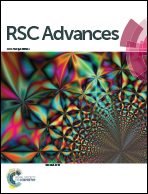Shape-dependent collective diffusion coefficient of multi-layers graphene nanopores
Abstract
Using non-equilibrium molecular dynamics, we study the particle transport in graphene membrane nanopores. The dependences of collective diffusion coefficient on the shape, the length, the cross sectional area of nanopore and the environmental temperature are discussed. Compared with carbon nanotubes, multi-layers graphene membrane has much lower collective diffusion coefficient. It is suggested that the interfacial and intracrystalline resistance can suppress particles transport in nanopores. Our research provides valuable advice for controlling the particle transport through nanoscale channels.


 Please wait while we load your content...
Please wait while we load your content...